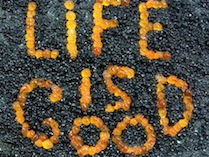 In “Authentic Happiness,” Dr. Martin Seligman; 1942–, postulates that there are three paths to happiness: the pleasant life, the good life, and the meaningful life.
In “Authentic Happiness,” Dr. Martin Seligman; 1942–, postulates that there are three paths to happiness: the pleasant life, the good life, and the meaningful life.
The Pleasant Life: Happiness is primarily sought through the use of the senses: good food, fine wine, shopping, time off with friends, vacations, cars, houses, pursuit of things of this world, having as many pleasures as possible.
The Good Life: The good life involves a balanced focus on the three main areas of life: work, play, love. Happiness is attained by achieving competence, identifying and building on your core strengths to reach flow states in these areas. (see Mihaly Csikszentmihaly’s “Flow: The Psychology of Optimal Experience”). Flow is when full
engagement and commitment creates a sustainable feeling of energized involvement and enjoyment.
The Meaningful Life: Happiness comes from a deep sense of fulfillment by living for a purpose greater than oneself.
The pleasant life is obviously weighted toward the hedonistic. The chief disadvantage of the pursuit of physical pleasure is that we tend to quickly become habituated. Each new level rapidly becomes the norm and thus loses its allure. The three lives are not completely contradictory, and a balanced life can contain elements of all three. However Dr. Seligman believes that lasting happiness lies in progressing through each until we achieve the ability to have most of our happiness come from living the meaningful life.
Closing quotes:
“Everybody loves money. That’s why it’s called ‘money’.” — Danny DeVito as Mickey Bergman, “Heist”; 2001
“Everyone knows money can’t buy happiness, yet, still, everyone wants to find out for themselves.” — Unknown
“Money never made a man happy yet, nor will it. There is nothing in its nature to produce happiness. The more a man has, the more he wants. Instead of its filling a vacuum, it makes one. If it satisfies one want, it doubles and trebles that want another way.” — David Alfred Doudney “Old Jonathan’s” Jottings; or, Light and lessons from daily life”; 1869, p. 18


0 Comments